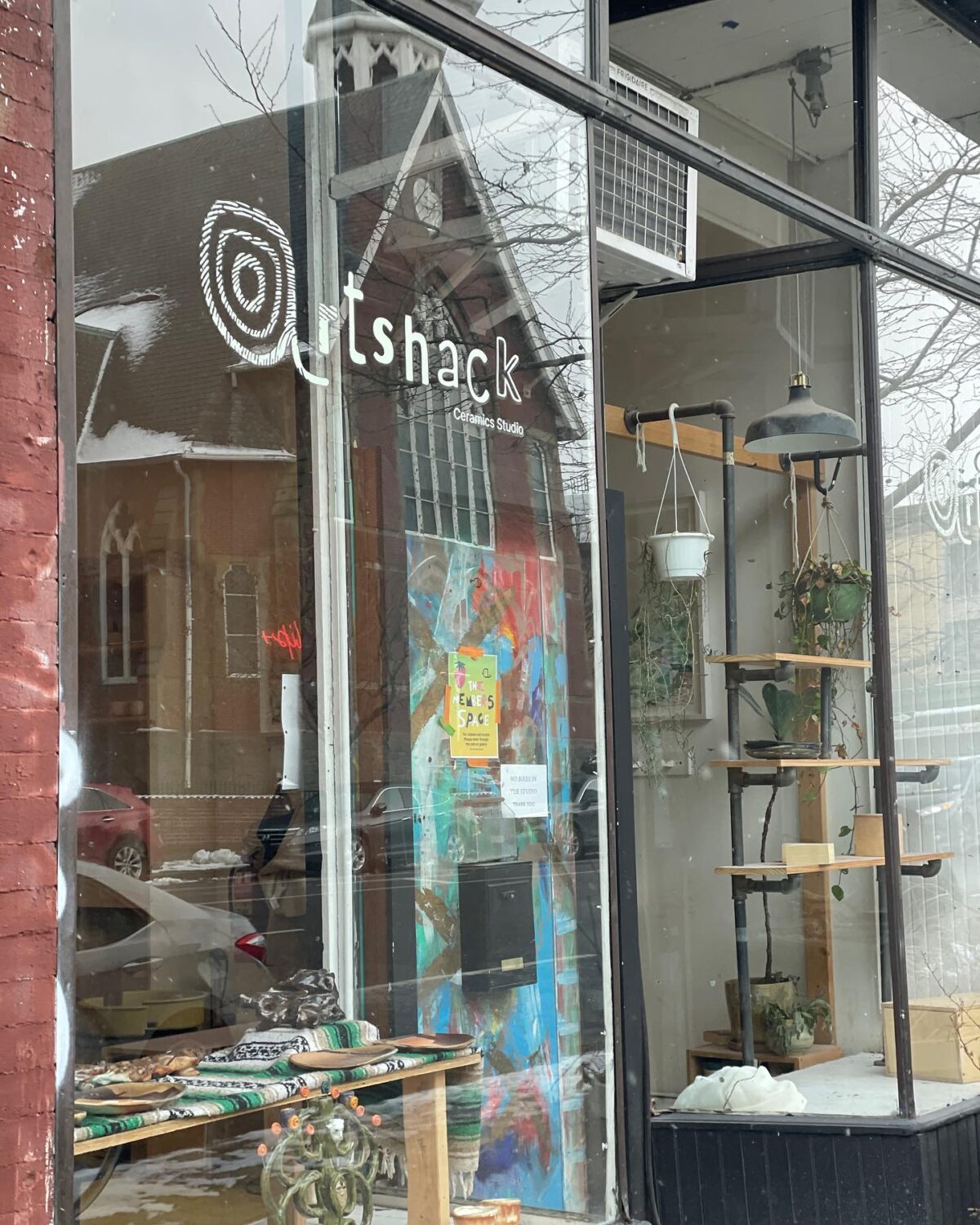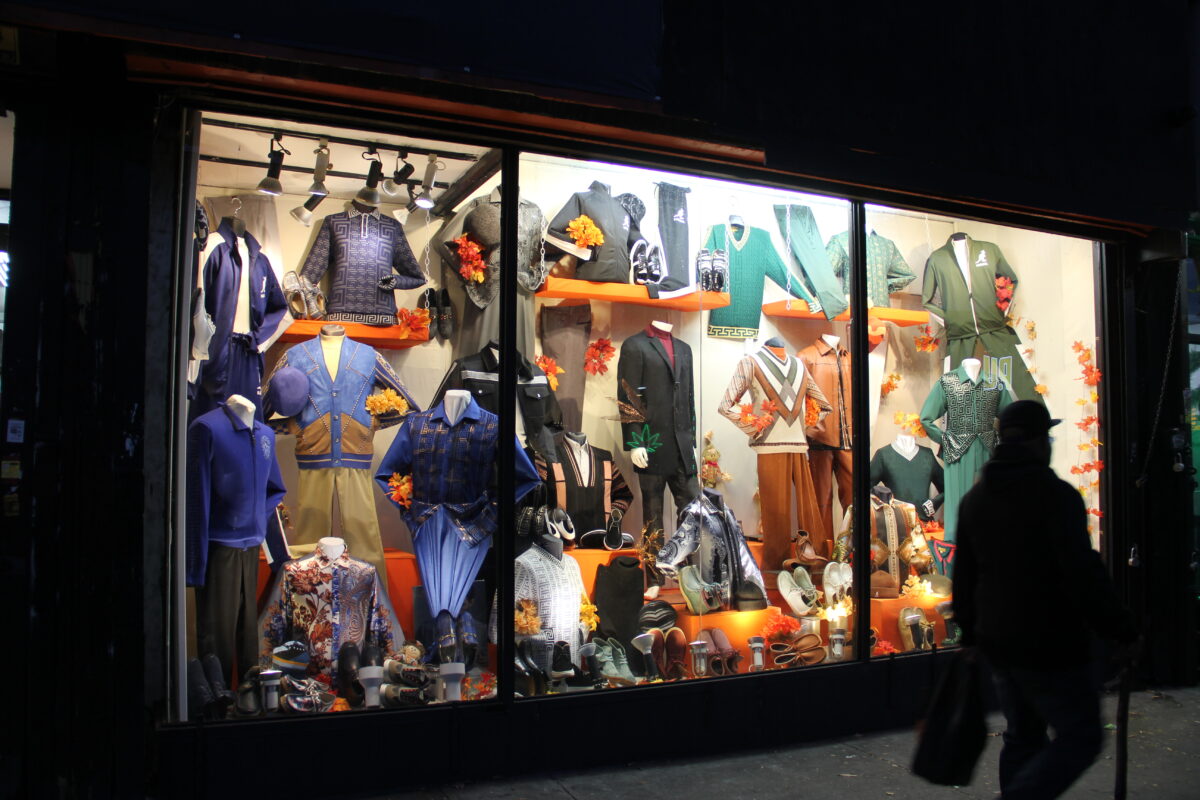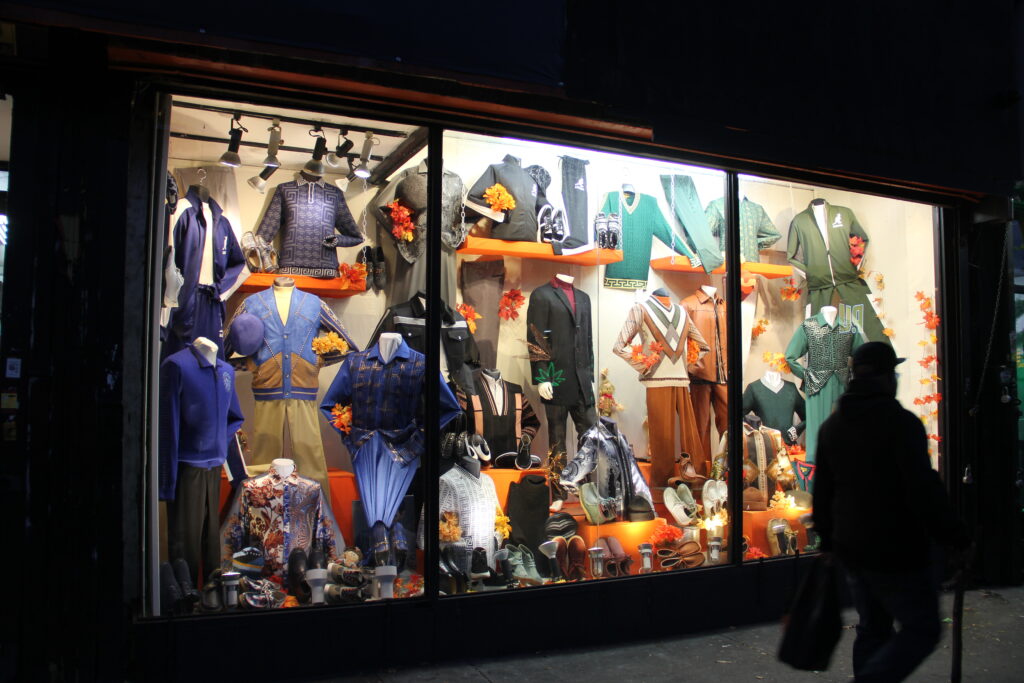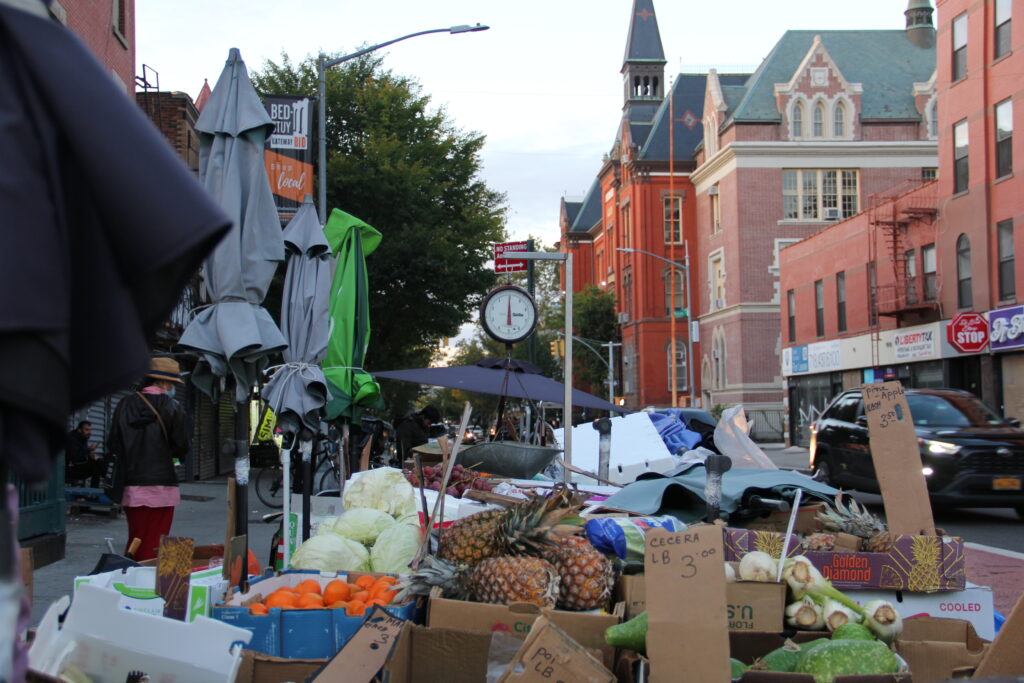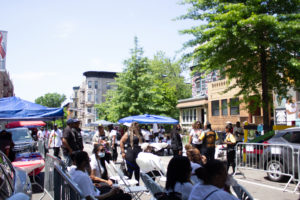‘Believe the Hype’ Column: Caring For Yourself and Others, Come Clay or Snow
By Christine Stoddard | cstoddard@queensledger.com
The following was originally published in the Jan. 25, 2024 print edition:
On yet another teeth-chattering morning, I found myself yanking on my snow boots and burying myself under an annoying amount of clothing. In less than 20 minutes, I was due at Artshack, where I would begin my first-ever wheel-throwing class. It was just enough time to walk, I realized as I double-checked Google Maps, but I didn’t want to risk slipping on the ice. I remembered walking through NYCHA’s Red Hook Houses earlier on in the week. The largest public housing project in Brooklyn has been under construction since 2020, and I found myself sliding on its frozen paths like a penguin. Such frustration would not be repeated that week. On a clear spring day, I could bolt over to Artshack, located on Bedford Avenue in Bed-Stuy, in a quarter of an hour. So into the car I went.
Warming up the car adds to the list of tasks that require winter’s slower pace. This is not a pace most New Yorkers seem to appreciate. We want to get moving, fast. Yet the reality is that we live in a place that demands extra prep on a typical January day. After we go through the annoyance of bundling up, maybe with a warm thermos in hand, we arm ourselves with ice scrapers, snow brushes, salt bags, and shovels. Then we brave the cold and all of its inconveniences. The upside is that we live in a place that experiences changes in season and snow, when it first falls, is a sight to behold.
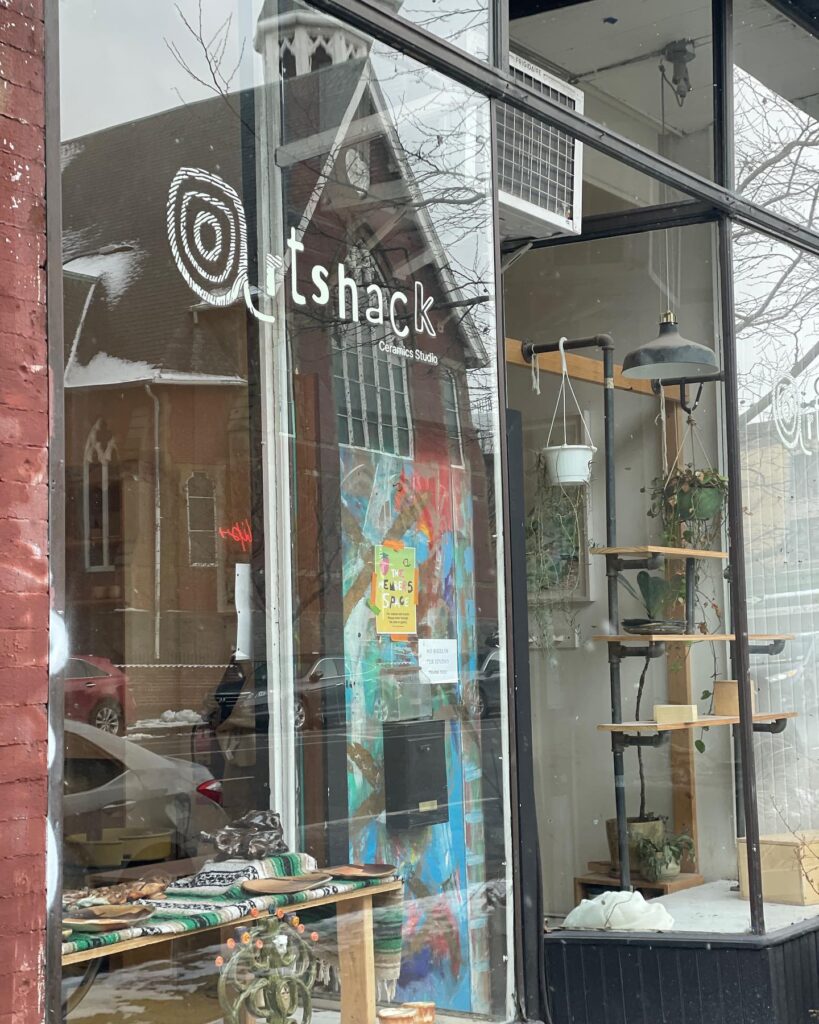
Artshack, a Haven
Though I had never been to Artshack prior to that class, from the moment I entered, I felt at peace. Started in 2008 by McKendree Key, this non-profit community ceramics studio offers classes to children and adults, but, this being the heart of Brooklyn, it has a progressive slant. The studio, which moved to its current location in 2016, brands itself as anti-racist and queer-affirming, and claims a strong belief in “the healing powers of clay.” Classes are affordable, with opportunities for scholarships and free and subsidized programming for low-income members of the community. (Benefitting from such financial aid allowed me to take my pottery class here.) In addition to there being studio space, there is a gallery and café. The café seems to be an ecosystem of its own, with folks chatting or clacking away at their laptops.
Donations to Artshack are collected year-round and very tangibly broken down on the website at ArtshackBrooklyn.org. A $50 donation, for example, will pay for one child to come to Open Clay Time. On Jan. 27, Artshack will offer a free clay workshop in honor of Gun Violence Survivors Week as one of its regular Community Days. Participants will “create, connect, and shape symbols of peace with clay.”
My wheel teacher is Ivan Samuels, a talented artist whose pottery depicting coral reef motifs called to me. From my first interactions with him, I found him to be patient and good-humored. Any teacher will tell you that these can be difficult qualities to cultivate and maintain. Still, I didn’t detect even the slightest strain in Ivan’s voice, no matter how much I bumbled. In a society that emphasizes perfection, it was a relief to have a space to try and fail among encouragement. Clay is messy, figuratively and, of course, literally.
As I cleaned up, I remembered that working with clay sucks the moisture out of your skin. On a wintery day, that means applying even more lotion than usual. I personally prefer cocoa butter, though I must admit I have not tried any of the local Brooklyn brands. (Of course, I am open to suggestions.) You have to take care of yourself in the studio, much as you do in the rest of your life. There are consequences for neglecting what your body needs.
Severe Cold Tips For Everyone
NYC’s Severe Weather web page outlines snow safety because, depending on where you grew up and how long you have lived in the Tri-State area, it is not necessarily common sense. Our city has recently welcomed more than 100,000 new arrivals. Many come from warmer parts of the world; at this time the top countries of origin for New York City’s asylum seekers are Venezuela, Ecuador, and Colombia. Can they really be expected to know how to dress for the weather? After all, how many New Yorkers neglect to layer up? How often do I see people of all kinds not wearing hats, hoods, or scarves, despite the fact that most of our body heat escapes through the head? Proper winter attire is not common knowledge across America; even so, having knowledge does not mean having access. Thanks to that blast of Arctic air from Canada, more than 90 people died due to weather-related causes this past week. At least three of those deaths occurred in New York state.
Floyd Bennett Field Migrants
You may be aware that many asylum seekers live at a shelter at Floyd Bennett Field in Marine Park. According to ardent complaints in a Facebook group called “STOP FLOYD BENNETT ILLEGAL IMMIGRANTS” (which I found because of a recent New York Post article), some of these migrants are going door to door not only asking for food and money but for warm clothes. Calls for donations to the “tent city” families have filled my social media.
While writing this column, I saw @southbrooklynmutualaid post a call for donations on Instagram. On the list were gently used or new winter coats, warm layering clothes (sweaters, heat tech, jackets), winter shoes, and ponchos. Advertised drop-off locations include Roots Cafe (639 5th Ave.), Community Bookstore (143 7th Ave.), Van Alen Institute (303 Bond St., Tues.-Thurs., 10am-5pm), and Brooklyn Army Terminal (with a filled out form, available on @southbrooklynmutualaid’s Instagram bio link). Inquiries for joining up the organizing work can be sent to southbkmutualaid@gmail.com.
Savvy Snow Removal
Now back to NYC’s Severe Weather tips. In perusing the list, I was reminded to stretch before going out; shoveling snow especially is a work-out. Another tip is to cover your mouth so brutally cold air does not enter your lungs. Shoveling snow can be a major heart attack risk, so take breaks and guzzle your H20. Also, keep dry, which means going back inside and changing your clothes if you get wet from lots of sweat, melting snow, or who knows what. And let’s not forget our neighbors! If someone is a senior citizen or has disabilities, they may need assistance. We may not always have the patience for kindness, but looking out for each other is part of what makes New York City liveable.
The City of New York also has a whole Snow Response webpage on the New York City Department of Sanitation site. Did you know that you can track snow plows in the city? There is a feature called PlowNYC that supposedly lets you see where plows are working in real-time. Of course, I found out about this feature after it snowed, so I cannot tell you how well it works. I will have to wait until the next snowfall to investigate.
According to the DSNY site, it is up to residents and businesses to clear snow and ice from sidewalks. The path must be at least four feet wide; snow and ice must be removed from around fire hydrants, as well as sidewalk corner ramps. If the snowfall ends between 7am and 4:59pm, it must be cleared within four hours. If it ends between 5pm and 8:59pm, it must be cleared within 14 hours. Snowfall ending between 9pm and 6:59am must be cleared by 11am. Precise! Fines range from $100-250. Yikes. Let’s try to avoid those, shall we? And not just because of tickets, but again, to do right by our neighbors.


